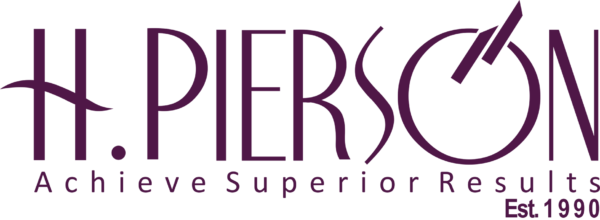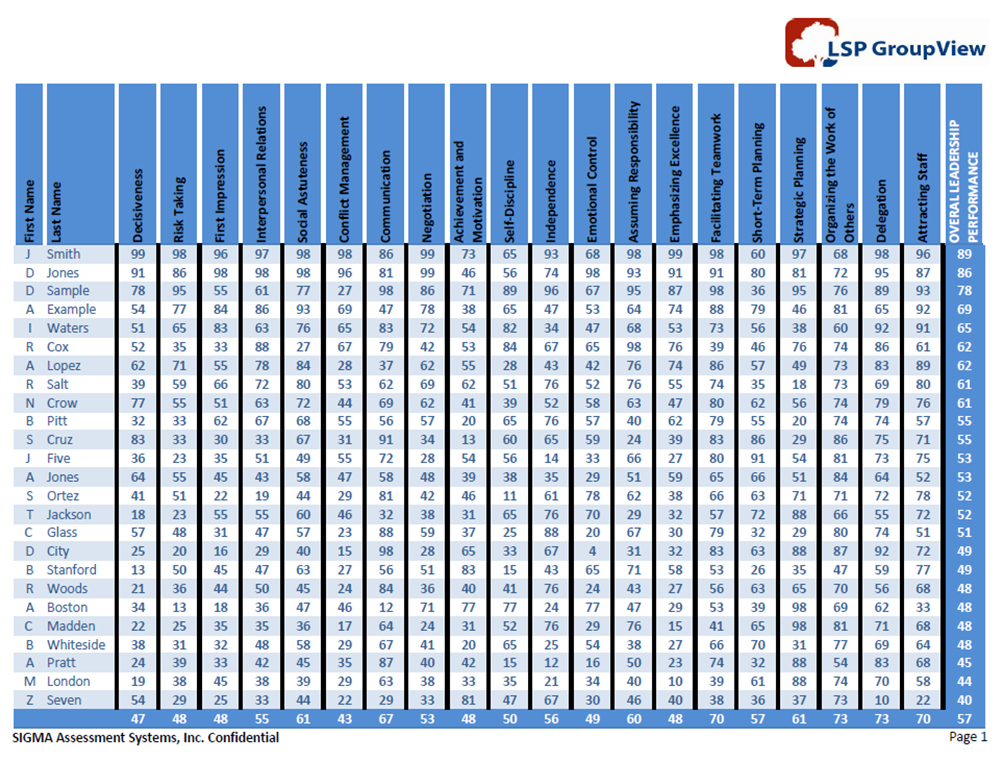As a business leader, keeping abreast of the current outsourcing trends will help you navigate the outsourcing ecosystem and adapt to the new normal of the post-pandemic world.
The outsourcing trends in 2022 reflect the changes the pandemic brought to the outsourcing market in the last couple of years. It suggests that businesses must look for providers with high-quality services, aim for high flexibility, and leverage updated technology while outsourcing in 2023.
In this article, we’ll discuss the 13 most crucial outsourcing trends of 2022 that you should watch out for in 2023. We’ll also look at the 5 most outsourced services of the year.
Let’s get started.
Outsourcing trends 2022: 13 key trends to watch out for in 2023
Outsourcing gives companies a competitive advantage by reducing operating costs, enabling staffing flexibility, and saving time.
Because of these benefits, more companies opt to outsource business processes, prompting outsourcing market growth.
Businesses expect to spend over $700 billion annually on outsourcing by the end of 2022. This growing outsourcing industry includes IT (Information Technology), healthcare, accounting, and other sectors.
- IT outsourcing spending will be $519 billion in 2023, a 22% increase over 2019’s numbers.
- Business process outsourcing (BPO) spending will increase to $212 billion in 2023, a 19% increase over 2019.
- The HR outsourcing market will be $19.38 billion in 2023.
However, outsourcing can be futile if you don’t plan it properly.
You’ll need to know relevant outsourcing trends to develop a successful strategy.
Here are a few outsourcing statistics and trends of 2022 that can help you make better outsourcing decisions in 2023:
1. Prioritizing quality
Companies now emphasize providing high-quality services to their customers.
For this, they’ll need skilled employees and advanced technology — which can be expensive in most countries.
As a result, companies are switching to processes such as software development outsourcing, HR outsourcing, business process outsourcing, legal process outsourcing, etc.
According to research from Commit, software development outsourcing will increase by 70% between 2022 and 2023,
Moreover, outsourcing enables companies to offer their clients customized solutions. An outsourcing company is more likely to have the time, expertise, and resources needed to customize solutions than an in-house team.
2. Ensuring business continuity
Companies preferred outsourcing with multiple vendors before the pandemic. But now, most want a strategic partnership with one (or fewer) vendors, as recently reported by the University of Cambridge.
Businesses now believe a strategic partnership with fewer outsourcing companies can ensure business continuity and cost saving.
How?
Frequently changing service providers can disrupt business continuity.
And a company is more likely to build a strong relationship with its outsourcing company when it’s working with the same team for an extended period. A strong bond can increase commitment and trust, which makes reaching objectives easier.
Additionally, businesses can ensure continuity with an outsourcing partner through a more extended outsourcing contract.
More extended contracts can ensure you’re provided services even during uncertain times because you’ll work with a trustworthy outsourcing partner.
3. Wanting business flexibility and adaptability
The Covid pandemic and the resulting lockdowns were chaotic and disruptive. Many countries had a hard time recovering from the short term economic shock. According to Deloitte’s 2021 Global Outsourcing Survey, these conditions are prompting businesses and service providers to become flexible concerning work.
And to match the growing agility demands of companies, an outsourcing provider will need to:
- Accept if the company suspends or pauses a project abruptly.
- Ensure work is completed before the deadline, even if there are sudden obstacles in the outsourcing destination.
- Increase collaborative initiatives.
4. Hiring niche talent
According to a 2022 ManpowerGroup survey, 75% of employers find it hard to find talent in the US.
Most importantly, there is a shortage of talent specialized in new technology. This shortage is the most significant barrier to the adoption of 64% of modern technology used in fields, like network and security, according to a 2021 Gartner survey.
And since it’s time-consuming to upskill in-house teams, companies are outsourcing services to a vendor with expert talent in a desirable outsourcing destination.
By outsourcing to a skilled vendor, a company can instantly access the expertise it lacks in-house.
5. Using modern technology
Companies keeping abreast of emerging technology can use it to automate processes, increase efficiency, and simplify operations.
But software development, automation, IoT (Internet of Things), and other modern technology evolve regularly. It can be challenging to update technology frequently, so companies are outsourcing to service providers.
A service provider is an expert in their specific field. As a result, they’re more likely to update themselves about the advancements in technology than an in-house team.
Here are the most current and trending technologies used in the outsourcing industry:
A. Robotic Process Automation (RPA) solutions
RPA is software development that helps build, deploy, and manage robots to carry out simple tasks.
The demand for robotic process automation is increasing as companies realize it is more cost effective to use robots to perform repetitive tasks.
A 2022 Grand View Research report states that the RPA market size was worth $1.89 billion in 2021.
This market will expand at a compound annual growth rate (CAGR) of 38.2% from 2022 to 2030.
B. Artificial intelligence, machine learning, and automation
Business and outsourcing companies use Artificial Intelligence to automate repetitive tasks, calculations, or replying to messages.
Additionally, Artificial Intelligence helps a provider improve customer service. Chatbots or cloud-based IVR (Interactive Voice Response) are examples of this revolutionary, emerging technology.
A 2022 Grand View Research survey reported that the global AI and Machine Learning outsourcing market size was $93.5 billion in 2021.
The AI and Machine Learning outsourcing market will expand at a compound annual growth rate (CAGR) of 38.1% from 2022 to 2030.
C. Cloud computing
Cloud outsourcing is essential to access other modern technologies like AI, RPA, and machine learning. It also empowers a company to collect and store resources on the cloud and access cloud services.
Companies such as Amazon Web Services (AWS), Google, and Microsoft are investing more capital into their cloud platform and cloud services.
A 2022 Cloudwards survey revealed that the total value of cloud computing and the cloud platform market will amount to $832.1 billion by 2025.
6. Demanding better cybersecurity
Digital transformation can open up several ways for intruders to access inside data.
A Forbes article revealed that 82% of companies faced cyberattacks in 2022. But managing an in-house security team can be difficult.
That’s why companies are hiring a Managed Service Provider (MSP). An MSP is a third-party service provider that manages a specialized operation, like data security.
Companies are handing over cybersecurity to MSPs as they’re more likely to have cybersecurity experts and advanced solutions. The demand for MSPs is so high that it was worth $152.02 billion in 2020 and will grow to $274 billion by 2026, as per Statista.
7. Outsourcing surge amongst startups and small businesses
Outsourcing allows small businesses or startups to access the best talents and tools at economical prices.
These businesses outsource repetitive tasks to save time and money. Small companies are also less likely to have experienced employees due to their limited payroll budget, and outsourcing enables them to access the best talents.
According to a Clutch survey, 90% of small US businesses plan to outsource a business process in 2022, a 10% increase from 2021.
This outsourcing trend will continue in 2023 and disrupt various industries.
8. Favoring nearshore outsourcing over offshore outsourcing
Nearshore outsourcing involves hiring a third party from a neighboring country to complete a business task. On the other hand, offshore outsourcing is outsourcing to a faraway country, usually in a different time zone.
In the post-pandemic world, companies are nearshoring more than in previous years.
According to the Inter-American Development Bank (IDB), nearshore outsourcing will add $78 billion to the export sector in Latin America and the Caribbean after 2023.
Similarly, a 2022 report by Bloomberg revealed that 80% of companies in North America like the United States, were actively considering nearshoring.
This change could be due to the relative comfort of companies’ experience in managing supply chains over a shorter distance and more minor zone differences of nearshore companies.
Additionally, navigating time zones and labor regulations in distant and culturally different countries, such as Malaysia, South Africa, and the Philippines, can be a huge business challenge. Nearshoring may empower businesses to overcome some of these barriers without hurting their bottom line.
9. IT outsourcing to Eastern Europe
Although India and China dominate the IT outsourcing industry, many tech businesses today are outsourcing tasks to Eastern Europe.
According to Statista, IT Outsourcing to Eastern Europe will reach $2.69 billion in 2022.
Companies in North America like the United States prefer East European countries, like Romania, Ukraine, Poland, and Belarus, for IT outsourcing due to their proficiency in English and cultural similarity.
Also, Eastern Europe has a high percentage of skilled people (including tech professionals), affordable talent, and strong data security.
Additionally, the salaries in several countries of Eastern Europe are low when compared to that in other countries, like the USA or Canada.
10. Preferring remote work
Due to the Covid pandemic, remote work has become the new norm.
According to a 2022 study on remote work by SCIKEY, 82% of respondents prefer working from home.
The study further revealed that 64% of employees said that they are more productive working from home and feel less stressed.
This trend is set to continue in 2023 and beyond.
11. Improving customer experience and satisfaction
Customer experience is the key brand differentiator in 2022 and will continue to give businesses a competitive edge in the coming year.
To provide a better user experience, businesses may have to invest in customer support and social media coverage more.
Focusing on customer experience can help companies:
- Ease customer acquisition.
- Increase customer satisfaction.
- Strengthen customer relationships and brand loyalty.
But the unpredictability of customer call volumes can be difficult to manage.
Companies may have to quickly scale up and down and manage the workforce for proper functioning.
This opens up more avenues for outsourcing customer service.
According to the Global Call Center Outsourcing Market’s 2022-2026 report, the call center outsourcing sector will grow by $21.72 billion.
The report also stated that the CAG rate will accelerate by 3.96% during 2022-2026.
Outsourcing services such as customer support improves the customer experience and lowers operational costs significantly.
12. Emphasizing cost reduction
Before the pandemic, companies were moving from cost reduction to prioritizing quality and scalability but that changed with the pandemic.
Deloitte’s Global Survey 2021 stated that 88% of the surveyed companies said cost reduction was now their main outsourcing objective.
Most surveyed outsourcing companies said that although clients wanted agility, scalability, and technology enablement, the reduction of operational costs brought by outsourcing services was the primary decision making factor.
This trend could continue in 2023 while the world economy recovers from the pandemic and recessions.
13. Practicing transparency in workflow
In the past years, most companies had little idea about the decisions made regarding the outsourced project as the outsourcing provider handled it completely. This led to frequent misunderstandings.
However, there’s now a growing demand for transparent communication with outsourcing companies.
A study by the American Scientific Research Journal for Engineering, Technology, and Sciences said that expressive communication is crucial for transparency.
Additionally, a Deloitte study reported that creating an outsourcing contract like an SLA can help increase transparency. An SLA can give your business a clearer idea about the quality of the outsourced work and help enterprises to hold the outsourcing provider accountable.
Now, let’s look at the most outsourced tasks in 2022.
5 most outsourced tasks in 2022
Here are the most outsourced services in 2022:
1. Information Technology (IT)
According to Statista, the IT outsourcing industry is growing at a CAGR of 8.93% and will be worth a market volume of $551,956.3 million by 2026.
Of all the IT services, most companies engage in RPA and software outsourcing.
In fact, the RPA market will be approximately $32.7 billion by the end of 2030.
Furthermore, Latin America is one of the most rapidly-growing regions for software outsourcing. Companies such as Amazon, Google, Uber, and Microsoft are all outsourcing software development to Latin America.
Other IT outsourcing trends include:
- Implementation of digital transformation.
- Mobile app support and management.
- Search engine optimization.
- Data center management.
2. Administrative
Commonly-outsourced administrative activities include telephone services, bookkeeping, event management, payroll management, and more.
Companies also hire virtual assistants (independent contractors who work remotely on tasks like scheduling appointments,completing administrative activities, and more).
According to Technavio, the global virtual assistant market size will grow by USD 4.12 billion, at a CAGR of 11.79% between 2021-2025.
3. Business Process Outsourcing (BPO)
Generally, companies outsource a business process such as IT services and human resource management to an external BPO company.
BPO has become the ideal cost-effective solution for companies looking to grow their business. BPO service providers help companies bridge need gaps within their structure and cover additional technical or non-technical business functions.
The BPO solutions industry is one of the fastest-growing industries in the world, with a CAGR of 9.1% from 2022 to 2030 (Grand View Research 2022).
4. Blockchain development
Blockchain development outsourcing is the process of finding an external third-party provider to take on the development and management of your blockchain technology.
Blockchain development outsourcing can be the ideal cost saving solution when a business needs to develop a blockchain product quickly.
The global blockchain technology market size was $5.92 billion in 2022.
The market is also expected to grow at a CAGR of 85.9% from 2022 to 2030 (Grand View Research 2022).
5. Legal process outsourcing
According to American Lawyer Media research, 93% of legal departments rely on several legal service providers to handle a wide array of tasks.
Outsourcing can differentiate your legal department and improve capacity without increasing overhead.
It enables companies to delegate time-consuming and mundane tasks such as document review and contract drafting to an outsourcing service provider.
In house legal teams can then focus on more meaningful work such as mitigating legal risks by designing and implementing suitable company policies and procedures.
The global legal process outsourcing market size was USD 10.77 billion in 2022.
The market will grow at a compound annual growth rate (CAGR) of 30.9% from 2022 to 2030 (Grand View Research 2022).
Wrapping up
Outsourcing has been witnessing several progressive trends post-pandemic.
Studying these trends can guide you to develop successful business plans for 2023. Learning more about an outsourcing trend can also help you handle uncertainties in your business and manage internal stakeholders effectively.
You can go through the top outsourcing trends listed above to develop a strategic plan for successful outsourcing for the coming years.












